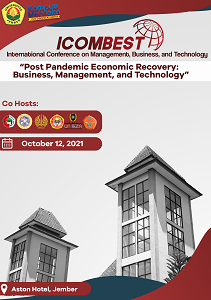UTILIZATION OF TOFU LIQUID WASTE WITH CERAMIC-BASED MICROBIAL FUEL CELL (MFC) TECHNOLOGY
Abstract
The purpose of this study was to determine the effect of adding variations in substrate concentration and the effect of variations in the surface area of the electrodes (anode and cathode) on the power density, resulting in a maximum power density value for a period of 13 days. measurement. The first step is measuring voltage and current with substrate concentration without dilution process, then variation of concentration is carried out with 10 times, 8 times, 5 times, 4 times, and 2 times dilutions on ceramics with a diameter of 8 cm. . The second step is to measure the voltage and current by varying the surface area of the electrodes (cathode and anode). The measurement results showed that the maximum power density value obtained was 188.23 mW/m2 without a dilution process, namely with a concentration of 3640 ppm for the 3rd day. While the results of the measurement of the variation of the electrode surface area obtained a maximum power density value of 205.88 mW/m2 on the electrode surface area of 3.57 m2 for the third day. The more surface area of the electrode given at the time of measurement, the more bacteria that are in contact with the electrode, causing the value of the resulting power density to be greater.
Keywords: waste tofu, microbial fuel cell (MFC), power density, electrode, ceramic









